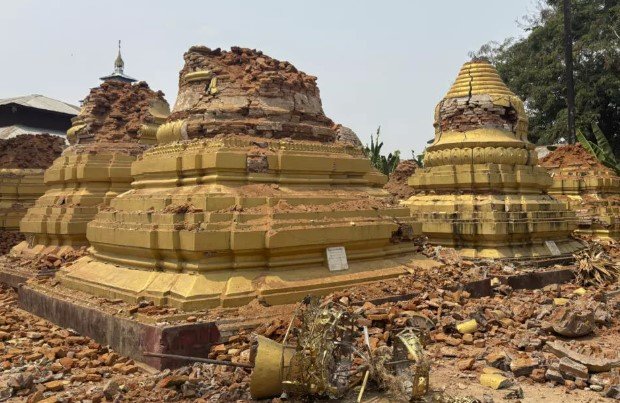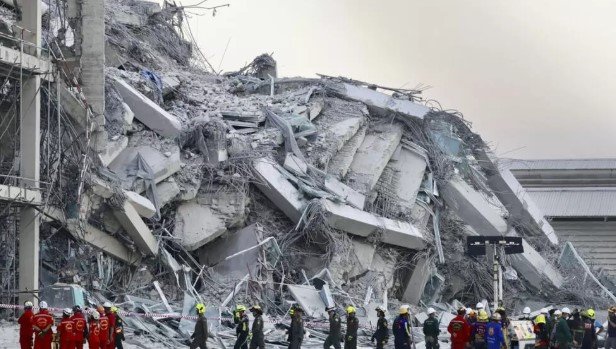On Friday, March 28, 2025, a powerful 7.7-magnitude earthquake struck central Myanmar, causing widespread devastation and loss of life. The quake, followed by a 6.4-magnitude aftershock, had its epicenter near Mandalay, the country’s second-largest city. The tremors were felt across the region, including in neighboring Thailand, where buildings collapsed in Bangkok, leading to additional casualties.
In Myanmar, the earthquake wreaked havoc on infrastructure, leaving a trail of destruction. Numerous buildings collapsed, roads cracked, and bridges were destroyed, including the iconic Ava Bridge in Mandalay. The city, known for its historical and cultural significance, now faces a grim reality as rescue operations struggle to reach affected areas due to the extensive damage.
The Myanmar government has declared a state of emergency in several regions as rescue teams work tirelessly to locate survivors and provide aid. Blood supplies are in high demand, and hospitals are overwhelmed with injured victims. The scale of the disaster has made it challenging to assess the full extent of the damage, but initial reports indicate significant loss of life and property.
The impact of the earthquake extended beyond Myanmar’s borders. In Thailand, the tremors caused buildings to collapse in Bangkok, resulting in casualties and widespread panic. The Thai government has also declared a state of emergency and mobilized resources to assist affected areas.

The international community has expressed solidarity with Myanmar and Thailand, with offers of aid and support pouring in. Rescue teams and humanitarian organizations are coordinating efforts to provide relief to those affected by the disaster.
As Myanmar grapples with the aftermath of this devastating earthquake, the focus remains on rescue and recovery operations. The tragedy serves as a stark reminder of the region’s vulnerability to seismic activity and the urgent need for disaster preparedness and resilience measures.



